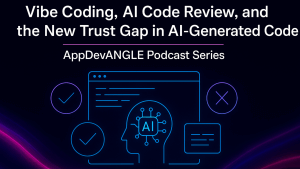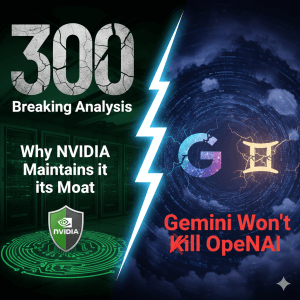Why Open Weights Push the Battle for AI Value Up the Stack
OpenAI and NVIDIA just dropped news with implications for every model lab, cloud, and enterprise AI customer and vendor. The two companies released gpt-oss-20B and gpt-oss-120B, open-weight reasoning models trained on millions of H100 GPU hours, tuned across NVIDIA’s full stack, and capable of spitting out 1.5 million tokens per second on a single Blackwell GB200 NVL72 rack. The weights ship under a permissive license; the inference path spans DGX Cloud, Blackwell servers, and RTX PCs via Ollama, llama.cpp, vLLM, FlashInfer, Hugging Face, and Microsoft AI Foundry Local.
Jensen Huang framed the announcement as “strengthening U.S. technology leadership,” but the deeper story is how open weights redraw the enterprise AI chessboard. If every developer can fine-tune a frontier-class model on a workstation, the moat shifts from model IP to data gravity, RL feedback loops, and business-process context. That’s the Jamie-Dimon thesis we laid out last November and last week in Breaking Analysis. Today’s launch resets the landscape and brings many questions, including how serious is OpenAI about open sourcing its models when it spends billions on training each subsequent model version.
Quick Stats on the News
| Model | Params | Context | Token Perf | Where It Runs Best |
|---|---|---|---|---|
| gpt-oss-20B | 20 B | 131 K | 256 t/s on RTX 5090 | RTX PCs / Workstations |
| gpt-oss-120B | 120 B | 131 K | 1.5 M t/s on GB200 NVL72 | Blackwell rack-scale |
- Mixture-of-experts, chain-of-thought, open license.
- First MXFP4 (4-bit) checkpoints optimized end-to-end on CUDA.
- Instant support in Ollama UI, llama.cpp, Hugging Face, vLLM, FlashInfer, ONNX Runtime.
- Inference footprint: ≥16 GB VRAM local; RTX 5090 hits 256 t/s; Blackwell NVL72 hits 1.5 M t/s.
Why It Matters—Six Takeaways
- Open weights move the front line
Proprietary API moats shrink; enterprises can now run and refine models in-house. Differentiation in our view now rises to tools, RL loops, guardrails, and — most importantly — data. - Data gravity and data value become the new moats for enterprises
With weights increasingly commoditized, the edge collapses to proprietary ledgers and real-time, digital-twin feedback loops. As we’ve reported, JP Morgan’s exabyte of transaction history now looks more valuable than ever. Other enterprises will follow suit but don’t forget about the data. Moreover, as NVIDIA correctly points out, not all enterprises have the skills of JPMC and many will require off-the-shelf model capabilities and may not be able to deal with open weight models. - Inference economics tilt to NVIDIA – Upping the Ante on Competitors
Blackwell + MXFP4 delivers real-time throughput for trillion-param models; RTX 50-series makes local inference table stakes. Competing silicon must match NVIDIA’s performance/watt and software ecosystem or surrender the margin. - Desktop AI goes mainstream
One-click Ollama chats with a 20-B model on a 24 GB card; PDF RAG and multimodal prompts are included in the package. Expect an explosion of POCs that never touch the cloud. - Post-training is the new bottleneck…and opportunity
Open weights render pre-training exclusivity less alluring in our view – especially for those firms with in-house skills or the appetite to outsource capabilities to consultancies. Enterprises now need turnkey RLHF/RLAIF, lineage, policy, and evaluation pipelines tied to governed digital twins. Not Omniverse-like digital twins, rather real-time representations of an enterprise and its ecosystem. - Pressure rises on data-platform margins
If a 5090 can run 256 t/s locally and fetch embeddings via RAG, the data layer (e.g. Snowflake, Databricks, etc.) gets pushed down the value chain. Unless vendors choose to climb into the System-of-Intelligence layer (metric graphs, process models) but that brings new competitive dynamics as we’ve reported.
Questions that Remain
- Moats & Margin
If anyone can fine-tune gpt-oss, how does OpenAI defend margin when the cost of training new models rise to tens of billions of dollars? - Enterprise Containment
What concrete mechanisms let a bank (for example) keep fine-tuned weights and RL traces inside a regulated VPC? [Note: NVIDIA indicated to theCUBE Research that there are many options including air-gapping to protect proprietary data]. - Full-Stack Economics
Blackwell claims 1.5 M t/s. What’s the $/M-tokens all-in (power + capex) and how does that compare with AMD, Google TPU, AWS Trainium or other alternatives once the model proliferates? - Continuous RL Loops
Does NVIDIA’s TensorRT-LLM stack include native RLHF pipelines so enterprises can run post-training privately, or will they need third-party tooling? [Note: NVIDIA indicated to theCUBE Research that it has native RLHF tooling in its stack]. - Context vs. Governance
A 131 K window is great for deal-room docs, but bigger context means bigger leakage risk. How will lineage, masking, security and audit work at that scale? - Platform Disruption If local inference + RAG siphons traffic away from centralized lakehouses, how do Snowflake, Databricks, and the clouds pivot “above the ice” before margins compress?
Bottom Line
Irrespective of OpenAI’s intentions, open-weight reasoning models democratize frontier model capability but push the value conversation up the stack into enterprise agents, proprietary data, RL feedback efficacy, and business context. In our view, enterprises that build a digital-twin capability will program the most valuable agents; everyone else will fight for thinner slices of an ever-cheaper API. Jensen just handed developers a Ferrari. The next race is who supplies the fuel – and who owns the road. A critical element in this puzzle is the 4D map of people, places things and activities. This map will leverage the digital twin and power agents to act with confidence.



